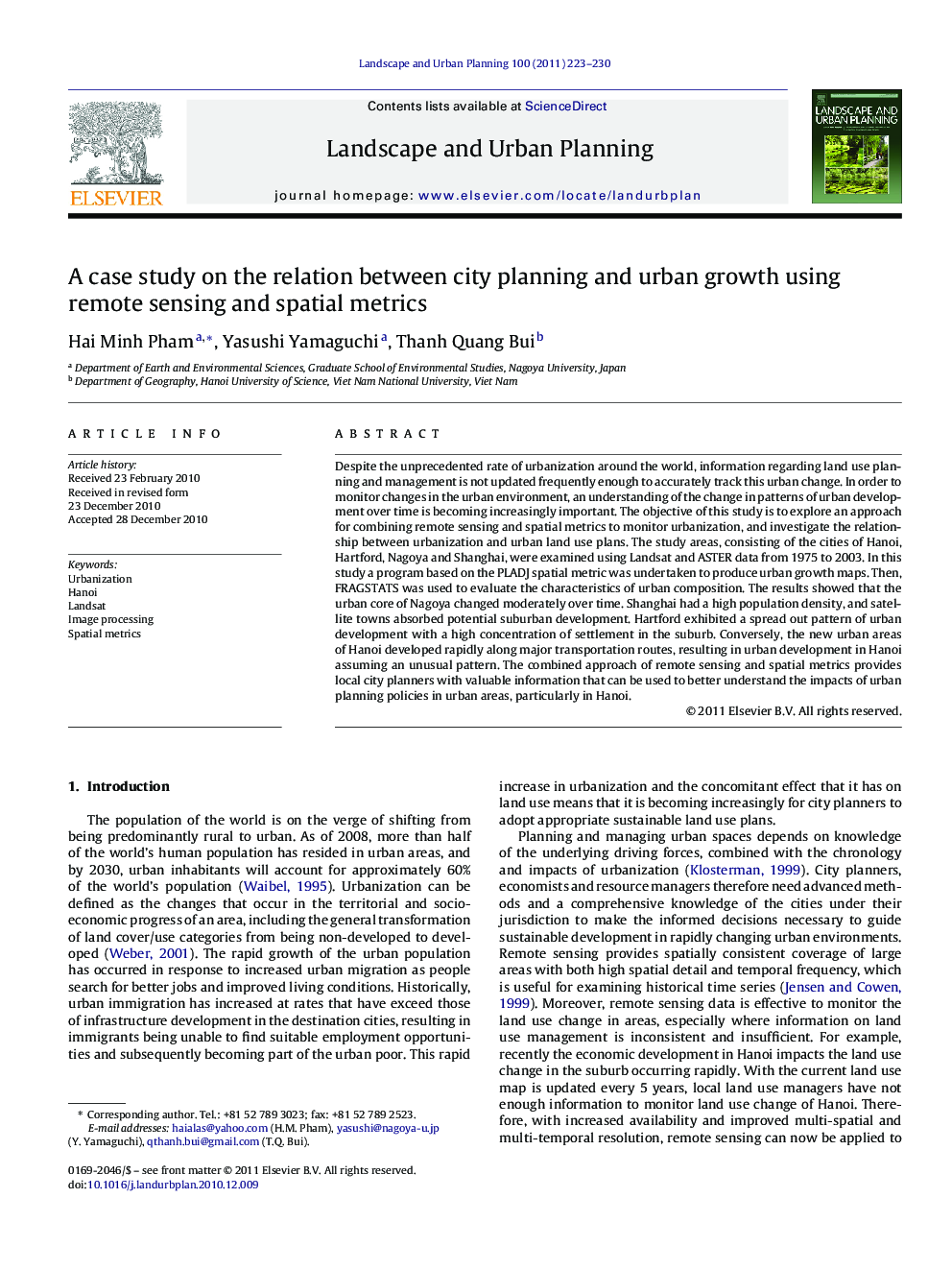| Article ID | Journal | Published Year | Pages | File Type |
|---|---|---|---|---|
| 1049876 | Landscape and Urban Planning | 2011 | 8 Pages |
Despite the unprecedented rate of urbanization around the world, information regarding land use planning and management is not updated frequently enough to accurately track this urban change. In order to monitor changes in the urban environment, an understanding of the change in patterns of urban development over time is becoming increasingly important. The objective of this study is to explore an approach for combining remote sensing and spatial metrics to monitor urbanization, and investigate the relationship between urbanization and urban land use plans. The study areas, consisting of the cities of Hanoi, Hartford, Nagoya and Shanghai, were examined using Landsat and ASTER data from 1975 to 2003. In this study a program based on the PLADJ spatial metric was undertaken to produce urban growth maps. Then, FRAGSTATS was used to evaluate the characteristics of urban composition. The results showed that the urban core of Nagoya changed moderately over time. Shanghai had a high population density, and satellite towns absorbed potential suburban development. Hartford exhibited a spread out pattern of urban development with a high concentration of settlement in the suburb. Conversely, the new urban areas of Hanoi developed rapidly along major transportation routes, resulting in urban development in Hanoi assuming an unusual pattern. The combined approach of remote sensing and spatial metrics provides local city planners with valuable information that can be used to better understand the impacts of urban planning policies in urban areas, particularly in Hanoi.
Graphical abstractFigure optionsDownload full-size imageDownload as PowerPoint slideResearch highlights► Low PLADJ percentage implies high fragmentation of the urban areas. ► Certain changes of the spatial metric parameters describe a particular type of city planning. ► The development of satellite towns creates the expansion urbanization pattern. ► High concentration of population in the suburb develops the outlying urbanization pattern.
